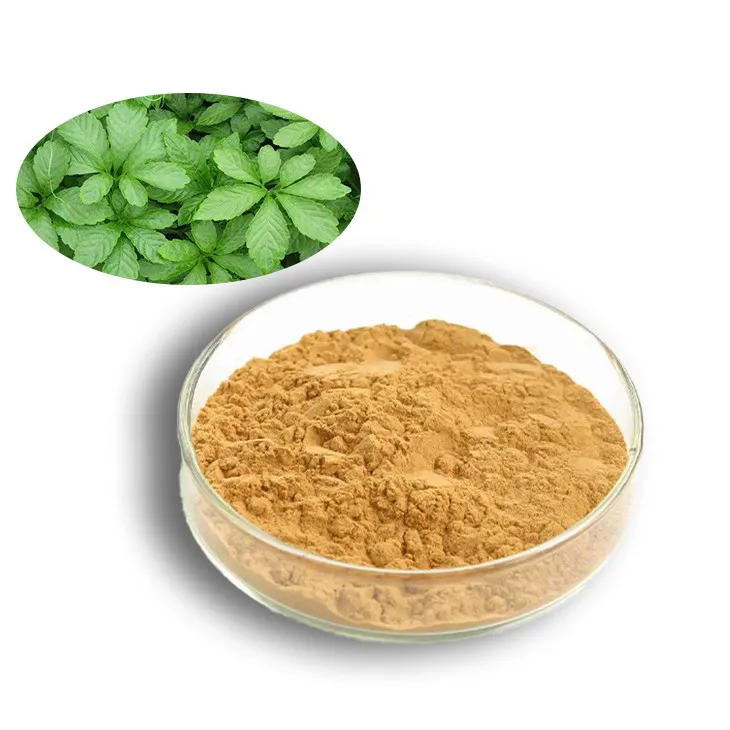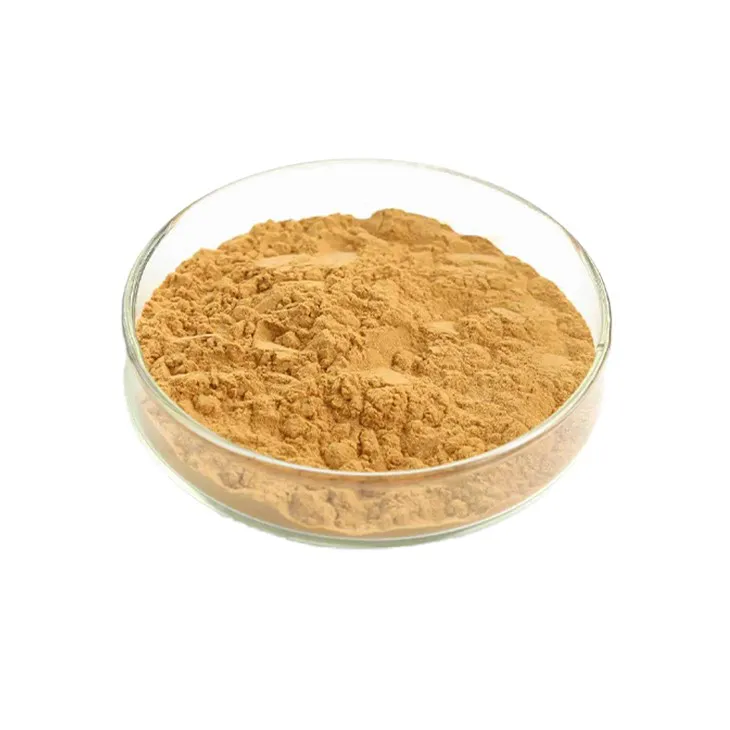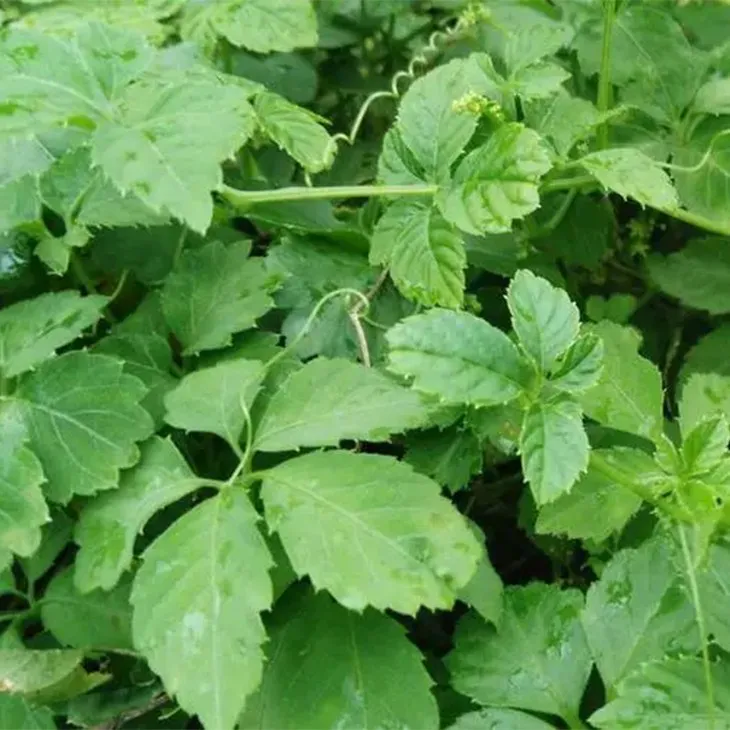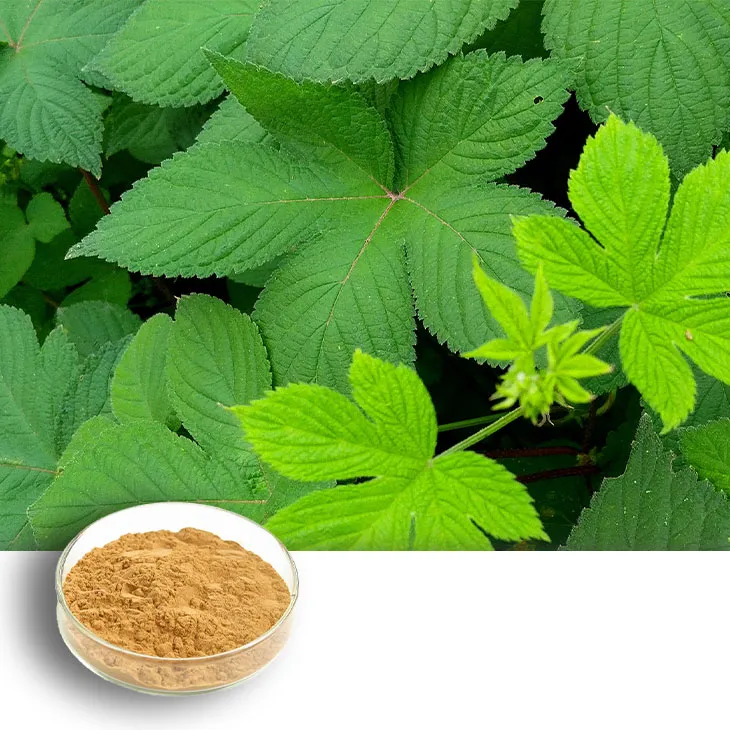- 0086-571-85302990
- sales@greenskybio.com
The best method for extracting Gynostemma pentaphyllum extract.
2024-11-26

1. Introduction
Gynostemma pentaphyllum, also known as Jiaogulan, is a valuable plant with various health - promoting properties. Extracts from Gynostemma pentaphyllum are widely used in the fields of medicine, health products, and cosmetics. The extraction method plays a crucial role in obtaining high - quality extracts while considering cost - effectiveness and environmental impact. This article will explore different extraction methods for Gynostemma pentaphyllum, analyze their characteristics, and try to uncover the optimal approach for extraction.

2. Traditional Solvent Extraction
2.1 Water Extraction
Advantages:
- It is a natural and environmentally friendly method as water is a non - toxic solvent.
- It can effectively extract water - soluble components in Gynostemma pentaphyllum, such as polysaccharides.
- The extraction efficiency for some lipophilic components is relatively low.
- There may be issues with microbial growth during the extraction process, which requires strict control of extraction conditions.
2.2 Ethanol Extraction
Advantages:
- Ethanol can dissolve a wide range of components in Gynostemma pentaphyllum, including flavonoids, saponins, etc.
- It has certain antibacterial properties, which can reduce the risk of microbial contamination during extraction.
- It is flammable, which poses safety risks during large - scale extraction.
- The cost of ethanol is relatively high, especially when high - purity ethanol is required.

3. Modern Extraction Technologies
3.1 Supercritical Fluid Extraction (SFE)
Advantages:
- Supercritical carbon dioxide (the most commonly used supercritical fluid) is non - toxic, non - flammable, and environmentally friendly.
- It has high selectivity, which can selectively extract specific components from Gynostemma pentaphyllum with high purity.
- The extraction process is carried out at relatively low temperatures, which can avoid the degradation of heat - sensitive components.
- The equipment for supercritical fluid extraction is complex and expensive, which requires high initial investment.
- The extraction capacity per unit time is relatively low, which may not be suitable for large - scale industrial production with high - volume requirements.
3.2 Microwave - Assisted Extraction (MAE)
Advantages:
- It can significantly shorten the extraction time by using microwave energy to heat the extraction system rapidly.
- The extraction efficiency is relatively high, which can increase the yield of active components in Gynostemma pentaphyllum.
- The non - uniform distribution of microwave energy may lead to inconsistent extraction results in different parts of the sample.
- There may be potential interference from microwave radiation on the extracted components, although this has not been fully proven.
3.3 Ultrasonic - Assisted Extraction (UAE)
Advantages:
- Ultrasonic waves can disrupt cell walls of Gynostemma pentaphyllum effectively, promoting the release of intracellular components and improving extraction efficiency.
- It is a relatively simple and cost - effective method, with relatively low energy consumption.
- The extraction may not be as selective as some other methods, resulting in a more complex extract composition.
- Long - term ultrasonic treatment may cause over - extraction and degradation of some components.

4. Quality Aspects of Different Extraction Methods
4.1 Component Integrity
- Supercritical fluid extraction is generally considered to be better at maintaining the integrity of heat - sensitive components such as some flavonoids due to its low - temperature extraction process.
- Traditional water extraction may cause some degradation of certain components during the long - term extraction process if not properly controlled.
- Supercritical fluid extraction has high selectivity, which can produce extracts with relatively high purity.
- Traditional solvent extractions like water and ethanol extractions may result in extracts with more impurities, which may require further purification steps.

5. Cost - effectiveness Considerations
5.1 Equipment and Initial Investment
- Supercritical fluid extraction equipment is expensive, requiring a large initial investment.
- Traditional solvent extraction methods, especially water extraction, usually require relatively simple equipment with lower initial investment.
- Ethanol extraction has relatively high operational costs due to the cost of ethanol as a solvent.
- Ultrasonic - assisted extraction has relatively low energy consumption and operational costs.
6. Environmental Impact
6.1 Solvent - related Environmental Issues
- Traditional solvent extractions using organic solvents such as ethanol may cause solvent waste and potential environmental pollution if not properly disposed of.
- Water extraction is more environmentally friendly in terms of solvent use, but proper treatment of wastewater is still required.
- Supercritical fluid extraction equipment requires a certain amount of energy to maintain supercritical conditions, which may have a relatively high carbon footprint.
- Ultrasonic - assisted extraction generally has relatively low energy consumption and thus a smaller carbon footprint.
7. Conclusion
Each extraction method for Gynostemma pentaphyllum has its own advantages and limitations in terms of quality, cost - effectiveness, and environmental impact. There is no one - size - fits - all "best" method, and the choice of extraction method should be based on specific requirements and circumstances. For small - scale production with a focus on environmental friendliness and natural extraction, water extraction may be a viable option. For large - scale production with a need for high - purity extracts, supercritical fluid extraction may be considered despite its high cost. Ultrasonic - assisted extraction is a cost - effective and relatively efficient method that can be widely used in many cases. In the future, further research and development may lead to improved extraction methods or combinations of different methods to achieve more optimal extraction of Gynostemma pentaphyllum extract.
FAQ:
Question 1: What are the common extraction methods for Gynostemma pentaphyllum?
Common extraction methods for Gynostemma pentaphyllum include solvent extraction (such as using ethanol or water as solvents), ultrasonic - assisted extraction, and microwave - assisted extraction. Solvent extraction is a traditional method. Ultrasonic - assisted extraction can enhance the extraction efficiency by using ultrasonic waves to break cell walls. Microwave - assisted extraction uses microwaves to heat the sample quickly, promoting the release of active ingredients.
Question 2: What are the advantages of ultrasonic - assisted extraction for Gynostemma pentaphyllum?
The advantages of ultrasonic - assisted extraction are significant. Firstly, it can shorten the extraction time compared to traditional solvent extraction. Secondly, it can increase the extraction yield of active ingredients in Gynostemma pentaphyllum. Thirdly, it is relatively energy - efficient and can be carried out at relatively low temperatures, which helps to preserve the bioactivity of the extracted substances.
Question 3: What are the limitations of solvent extraction in Gynostemma pentaphyllum extraction?
Solvent extraction has some limitations. One limitation is that it may require a large amount of solvent, which can be costly and may also have environmental implications if the solvent is not properly disposed of. Another limitation is that the extraction time may be relatively long, and the extraction efficiency may not be as high as some modern extraction methods. Additionally, some solvents may not be able to completely extract all the active ingredients.
Question 4: How does microwave - assisted extraction affect the quality of Gynostemma pentaphyllum extract?
Microwave - assisted extraction can have both positive and negative effects on the quality of the extract. On the positive side, it can quickly and effectively extract active ingredients, which may lead to a higher content of beneficial compounds in the extract. However, if the microwave parameters are not properly controlled, it may cause degradation of some heat - sensitive active ingredients, thus affecting the overall quality of the extract.
Question 5: Which extraction method is the most cost - effective for Gynostemma pentaphyllum?
The most cost - effective extraction method depends on various factors. Solvent extraction may be relatively inexpensive in terms of equipment, but the cost of solvents can add up. Ultrasonic - assisted extraction may require the purchase of ultrasonic equipment, but it can save time and increase extraction yield, which may offset the equipment cost in the long run. Microwave - assisted extraction also needs specific microwave equipment. In general, if large - scale production is considered, factors such as extraction yield, energy consumption, and equipment depreciation need to be comprehensively evaluated to determine the most cost - effective method.
Related literature
- “Optimization of Extraction Conditions for Gynostemma pentaphyllum Polysaccharides”
- “Comparative Study on Different Extraction Methods of Gynostemma pentaphyllum Active Components”
- “The Influence of Extraction Techniques on the Bioactivity of Gynostemma pentaphyllum Extracts”
- ▶ Hesperidin
- ▶ citrus bioflavonoids
- ▶ plant extract
- ▶ lycopene
- ▶ Diosmin
- ▶ Grape seed extract
- ▶ Sea buckthorn Juice Powder
- ▶ Beetroot powder
- ▶ Hops Extract
- ▶ Artichoke Extract
- ▶ Reishi mushroom extract
- ▶ Astaxanthin
- ▶ Green Tea Extract
- ▶ Curcumin Extract
- ▶ Horse Chestnut Extract
- ▶ Other Problems
- ▶ Boswellia Serrata Extract
- ▶ Resveratrol Extract
- ▶ Marigold Extract
- ▶ Grape Leaf Extract
- ▶ blog3
- ▶ blog4
-
Chinese Withania somnifera Extract Factory.
2024-11-26
-
中国松树皮提取物粉粉末供应商
2024-11-26
-
High - quality Marigold Extract Products.
2024-11-26
-
100% Pure Natural Mango - Flavored Powder.
2024-11-26
-
Maca Extract
2024-11-26
-
Medicinal Marshmallow Extract
2024-11-26
-
Alfalfa Meal
2024-11-26
-
Thunder God Vine Extract
2024-11-26
-
Calendula Extract
2024-11-26
-
Feverfew Extract
2024-11-26
-
Stevia Extract
2024-11-26
-
Bayberry Extract
2024-11-26
-
Withania Somnifera Extract
2024-11-26
-
Bamboo Leaf extract
2024-11-26





















